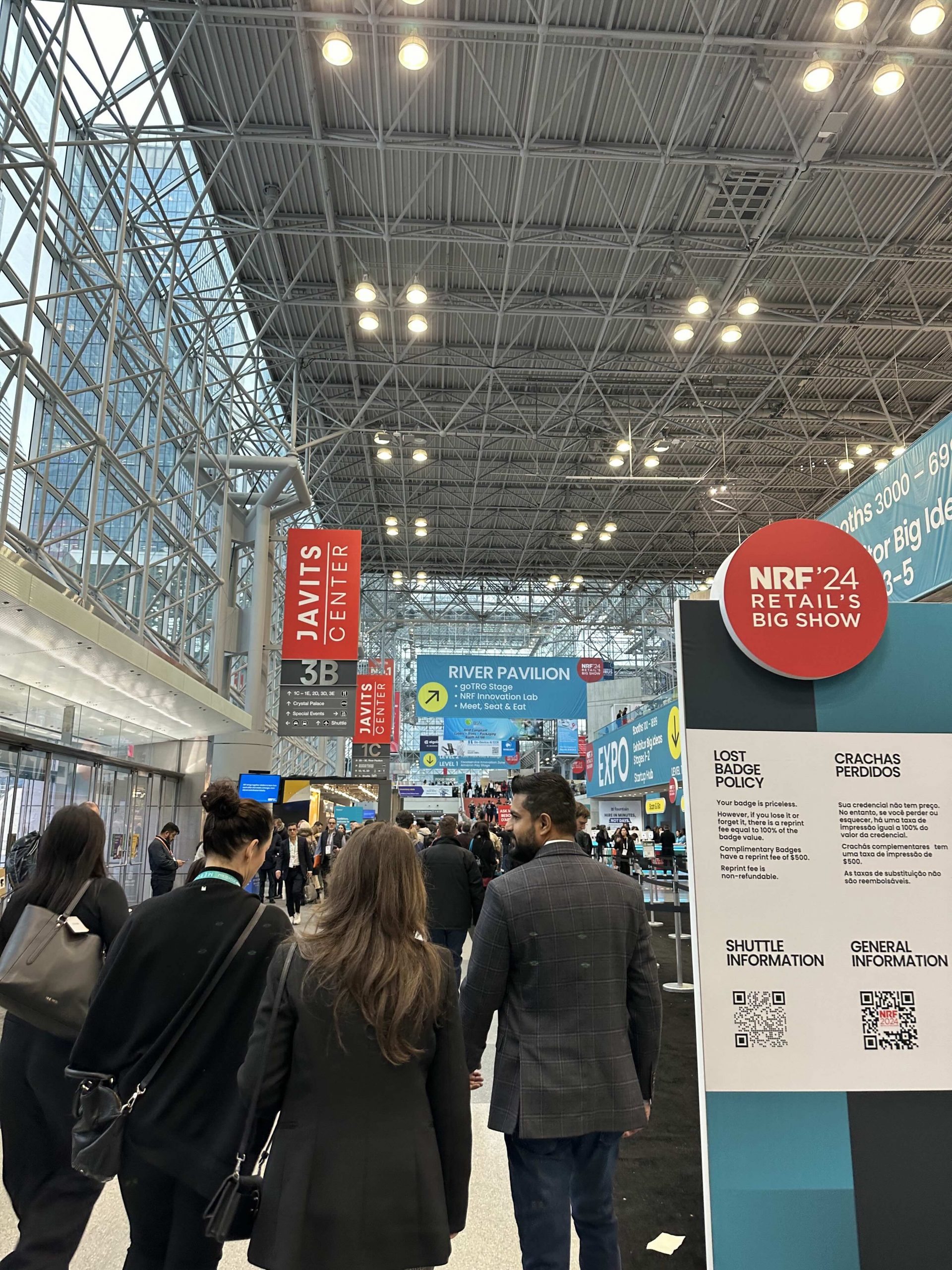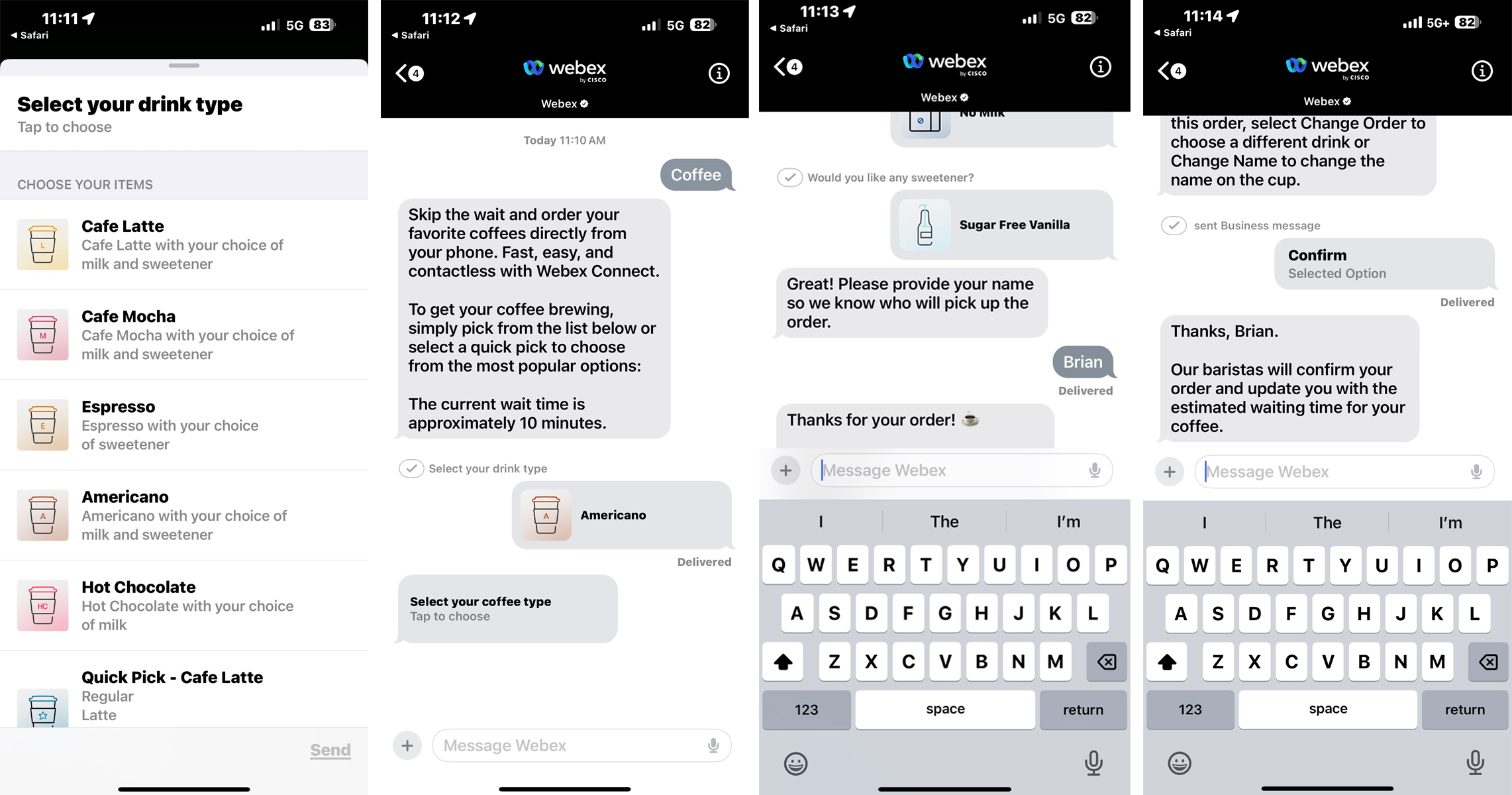The National Retail Federation (NRF) just hosted its 2024 show at the Jacob K. Javits Convention Center in New York City over the MLK long weekend. Kaleigh Bisconti and Brian Domine from the Cisco Store and Cisco Store Tech Lab team share their insights into the technology they experienced and where they see the future of retail heading.

Please introduce your roles at the Cisco Store!
Kaleigh: I’m Kaleigh Bisconti – I oversee the Cisco Store and Cisco Store Tech Lab program, which includes the travel stores, physical stores, and our online stores.
Brian: I’m Brian Domine – I run all the technology deployments in the Cisco Store through the Cisco Store Tech Lab, both at the physical locations and at our travel stores.
What was the most interesting technology you saw at NRF?
Kaleigh: There was a space called the Innovation Lab that displayed up-and-coming technology solutions. The Tech Lab’s partner EVERYANGLE was there: EVERYANGLE is responsible for giving us in-store metrics, such as customer demographics, sentiment, and purchase conversion rate, that you would previously only be able to get from online stores.
Typeface was also a cool find. You can input your company’s brand guidelines and they leverage artificial intelligence (AI) to generate content in accordance with those guidelines. They can also cater the content they generate towards specific target markets. For example, if a car manufacturer wanted to adjust their content by geographic region, Typeface could do that for them. I could see the Cisco Store implementing this kind of technology in the future: Typeface could help create content for specific platforms.
Brian: There were multiple companies such as Proto and ARHT with spaces containing life-sized holograms of a person. You could have two-way live interactions with the holograms, which was pretty cool.
What technology did you see at NRF that you would like to see in day-to-day shopping experiences?
Kaleigh: From a retailer’s point of view, there were a lot of electronic shelf label (ESL) solutions that would make store operations more streamlined. They can be quickly updated with price or product changes, and you can even alter the currency according to which country you’re in.
Brian: Lots of self-checkout kiosks with larger, more interactive screens than just a small tablet.
What are some problems people normally face while shopping? How might the Cisco Store Tech Lab help solve those problems?
Kaleigh: A big problem is workforce optimization. Retailers need to streamline the efficiency of sales associates on the floor in physical stores: for example, finding a way to automate the retrieval of products at the back of house. With workforce shortages, solving this problem is especially important.
Brian: The Cisco Store utilizes Webex Connect to quickly answer customers’ questions and forward them to live agents if they need further assistance. Meraki cameras placed throughout the store help track customer demographics and sentiment and detect any theft or fraudulent purchases. These are just a couple of examples of how we try to solve the problems Kaleigh mentioned.
What is a priority to you when you are in a retail environment?
Kaleigh: Having a seamless experience is one of the most important aspects in a retail environment. If a product is available in a physical store, it should be available online (and vice versa). At the very least, a customer should be able to quickly locate items in a physical store or get rapid assistance finding those items and/or shipping them home or to the store itself. There should be a self-checkout option that moves quickly too.
One of the biggest plus points of a physical location is that a customer should be able to have a fresh experience there compared to the online offerings. This means having a more engaging store experience through interesting attractions such as in-store customization options.
Brian: On the note of better engagement in-store, Webex demonstrated their customer communication platform, Webex Connect, through a mobile order coffee bar experience called Café Cisco at NRF. Customers could scan a QR code to begin the process and then quickly place their coffee orders by interacting with Webex Connect on their native messaging client. The baristas in turn could interact with the customers and keep them updated on their orders.

The possibilities of Webex Connect don’t stop there. The concept behind Café Cisco can be translated into other experiences as well, including our upcoming in-store customization experience which will launch at Cisco Live Vegas later this year.
How do you see augmented/virtual reality (AR and VR) being integrated into future retail experiences?
Kaleigh: Meta displayed its Meta Quest products at the Innovation Lab, showcasing mixed-reality environments for multitasking at the workplace.
Brian: There weren’t a ton of other AR experiences we saw, but spatial computing will become more of a topic of discussion once the Apple Vision Pro is released.
Where do you see the retail industry going in the next 5 years?
Kaleigh: I see workforce optimization being tackled in the next few years. Electronic shelf labels (ESLs) will become a lot more prevalent, especially in the US. I hope we’ll be seeing more RFID self-checkout as well; it’s much more common in Asia and only a few stores in the US have implemented it so far. I also think we’ll see more integration in product searchability between online and physical stores.
Understanding in-store audiences on a deeper level will be even more important in the coming years to make sure that physical stores stay efficient and worth the time and staffing power required to keep them running. As we mentioned before, Meraki cameras and Everyangle do a good job of getting us those physical store analytics at the Cisco Store.
I think the retail industry will also be trying to develop and integrate more technological solutions that gather information about their customers while still maintaining their privacy. Shopping experiences may start becoming more personalized and stores may start creating more immersive experiences in their physical locations: for example, a digital screen changing based on who the visitor is. These changes will be interesting to track over the next few years for sure.
If you had the chance to join us this year at NRF, thanks for stopping by! Hope to see you next year.

CONNECT WITH US